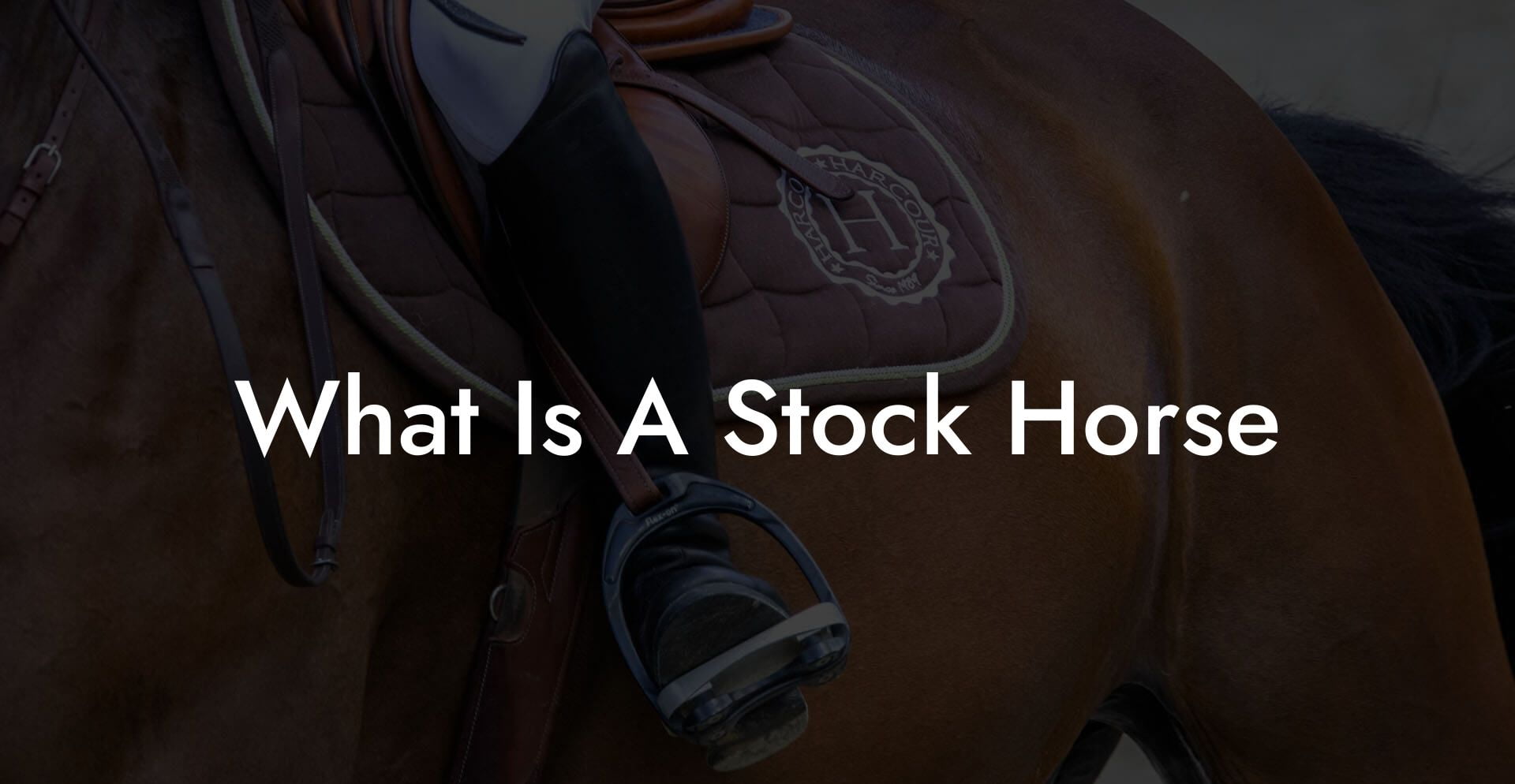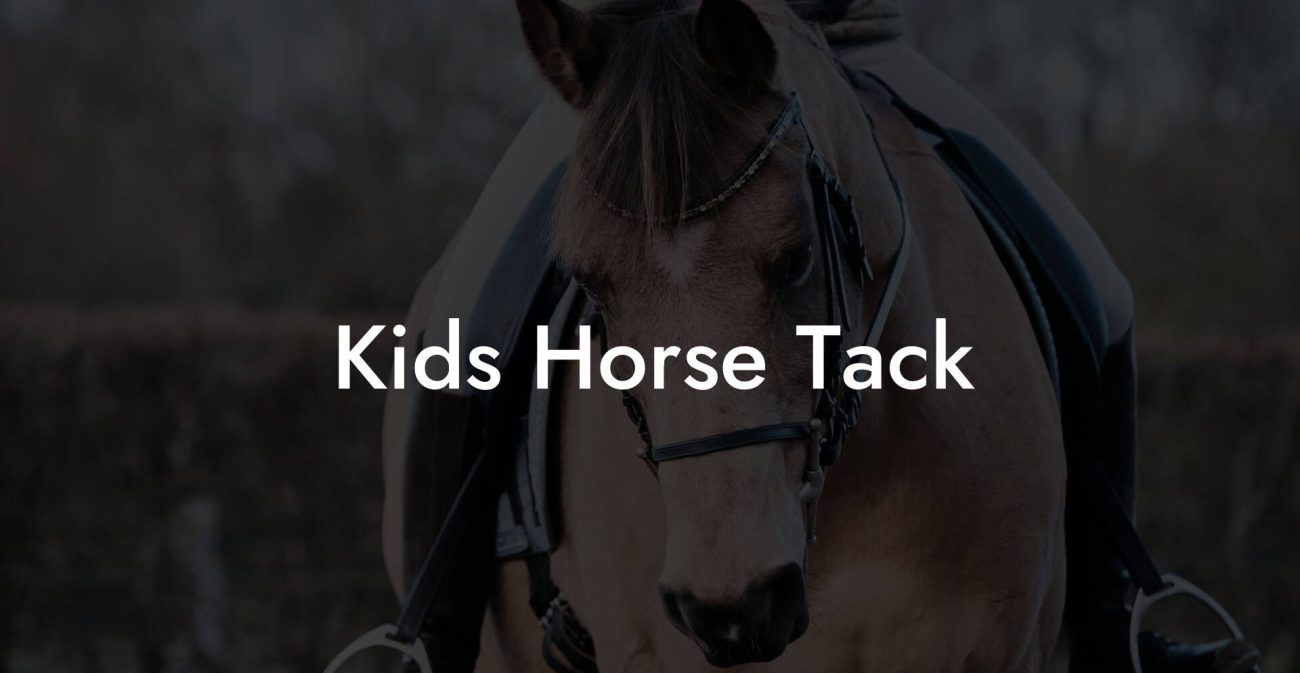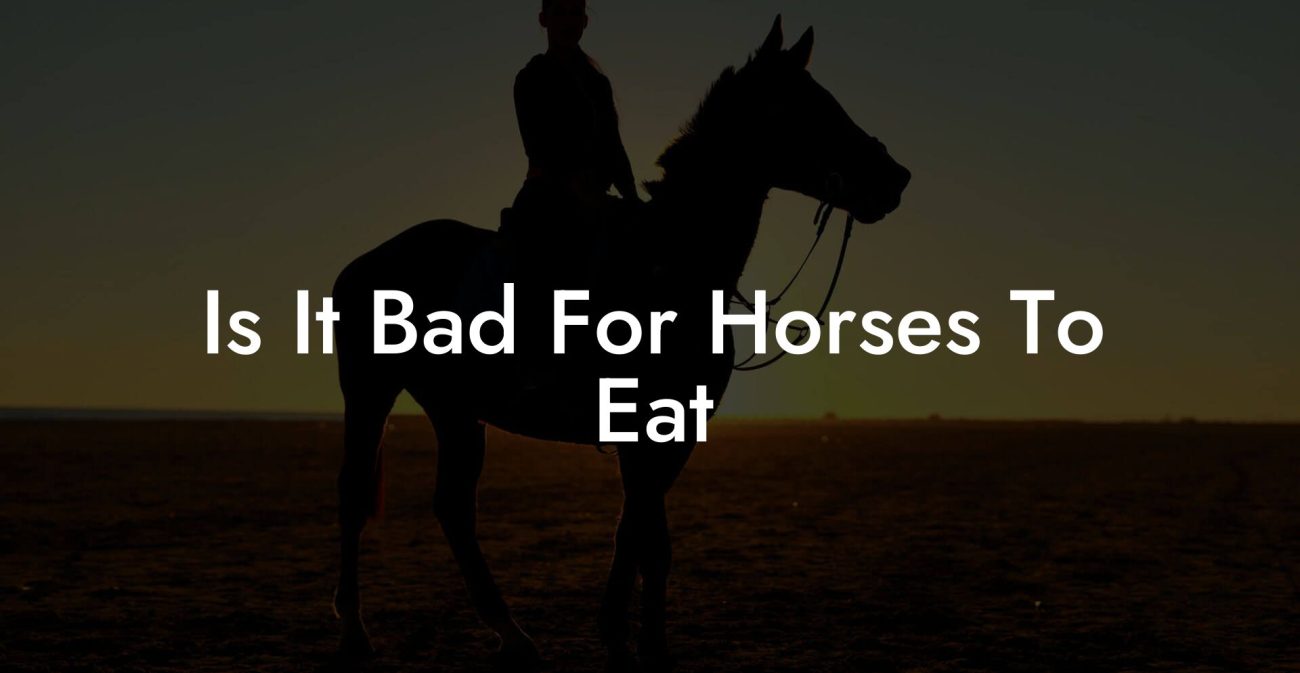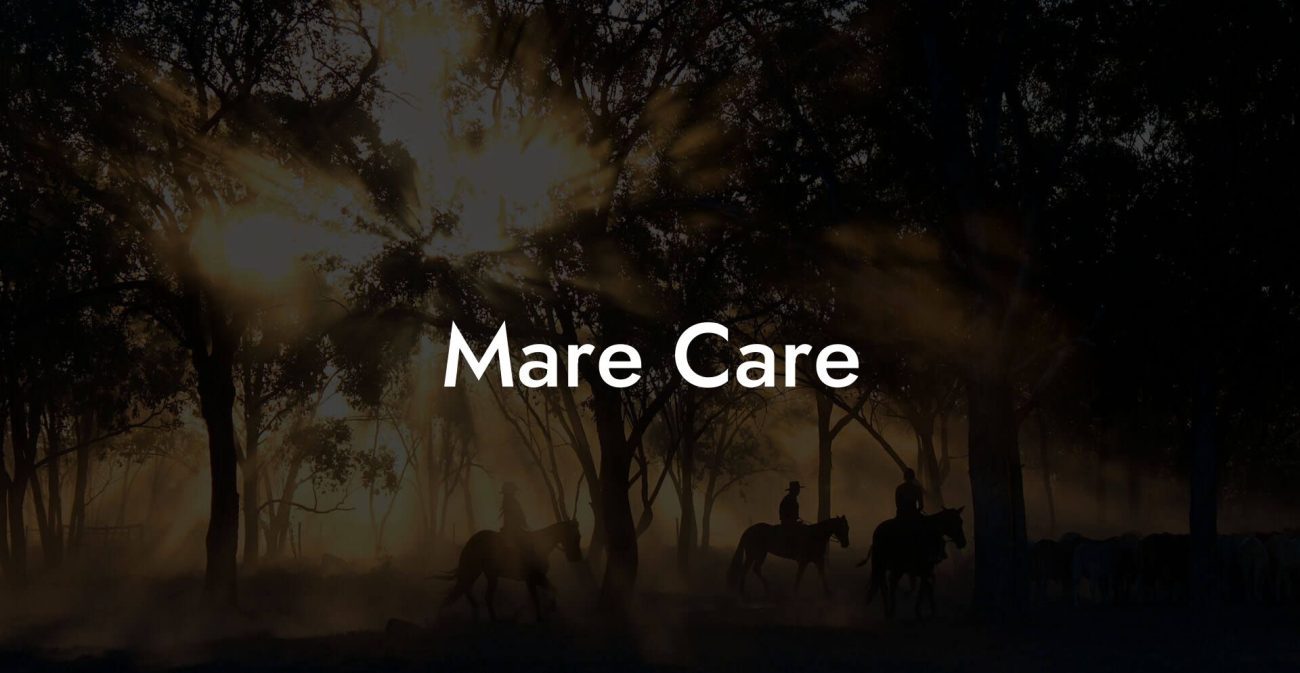Ever wondered what makes a stock horse so uniquely captivating? Picture a four-legged workhorse with a rugged charm, a keen sense of purpose, and a dash of wild spirit that effortlessly blends the practicality of ranch life with the free soul of the open range. In this deep-dive guide, we’re unlocking the secrets of stock horses, those trusted, versatile steeds who have carried cattle, braved dusty trails, and become legendary icons of Western heritage. Whether you're a newcomer curious about equine culture or a seasoned rider eager to learn more about caring for these incredible animals, read on as we explore the history, characteristics, care tips, and practical know-how of stock horses in a way that resonates with Gen-Z and millennials alike.
Quick Links to Useful Sections
- What Is a Stock Horse?
- The Origins and Legacy of the Stock Horse
- Distinct Characteristics and Traits of a Stock Horse
- Physical Prowess and Endurance
- Intelligence and Trainability
- Temperament and Versatility
- Enduring Spirit and Resilience
- Types of Stock Horses and Their Specializations
- Quarter Horses: The Ranch King
- Mustangs: The Untamed Spirit
- Paint Horses: The Colorful Companions
- Appaloosas: The Spotted Wonders
- The Role of Stock Horses in Modern Ranching and Western Culture
- Working on the Ranch
- Competitive Arenas
- Cultural Significance
- Caring for Your Stock Horse: Best Practices for health and Happiness
- nutrition and Feeding
- Exercise and Training
- grooming and Preventative Care
- Creating a Stimulating Environment
- Essential Gear and equipment for Stock Horse Management
- Saddles and Bridles
- Protective Gear
- Training Aids and Accessories
- Integrating Modern Techniques with Traditional Stock horse care
- Digital Tools for Monitoring Health
- Advancements in Veterinary Care
- Blending Old-School Wisdom with New-School Innovation
- Understanding the Bond Between Rider and Stock Horse
- Building Mutual Trust
- The Role of Consistent Training
- Caring Beyond the Arena
- Resources and Community Support: Your Next Steps
- Stock Horse Training Techniques: From Basics to Brilliance
- Starting With the Basics
- Advancing to Specialized Skills
- Integrating Modern Training Tools
- Stock Horse Health Concerns and How to Address Them
- Common Health Issues
- Preventative Care Strategies
- When to Seek Professional Help
- Engaging Success Stories: Lessons From the Ranch
- The Resilient Quarter: From Rookie to Rodeo Star
- Breaking Barriers: The Mustangs’ Journey to Trust
- The Appaloosa Advantage: A Story of Style and Substance
- Integrating Technology and Innovations Shaping the Future of Stock Horse Care
- Smart Wearables for Equine Performance
- Virtual Communities and Online Learning
- Innovative Training Platforms
- Frequently Asked Questions About Stock Horses
- Your Journey Into the World of Stock Horses Starts Here
What Is a Stock Horse?
A stock horse is much more than just a horse, it’s a working partner, a companion, and an essential part of livestock ranching history. These horses are bred and trained to handle cattle and work on ranches. Known for their agility, endurance, and instinctual ability to manage livestock, stock horses embody a blend of strength and intelligence. Their robust nature makes them ideally suited for the demanding tasks on a ranch, ranging from herding cattle to participating in rodeo events.
When you think of a stock horse, picture a creature with a spirited personality, keen alertness, and a natural knack for understanding subtle cues from its handler. Their reputation isn’t just built on power, it’s also about grace under pressure, adaptability to changing environments, and the unwavering bond they form with their riders.
In modern ranch culture, these horses have earned a special place in both practical working scenarios and as cherished members of the equine community. From the dusty arenas of rodeo shows to the everyday tasks on a cattle ranch, the stock horse remains an enduring symbol of resilience and tradition.
The Origins and Legacy of the Stock Horse
The story of the stock horse is woven into the very fabric of frontier history. Descended from Spanish horses introduced to the Americas and further refined through selective breeding, stock horses evolved to meet the rigorous demands of ranch life. Over the centuries, these horses have been prized for their athleticism, stamina, and a demeanor that balances toughness with a gentle temperament.
Their storied past is filled with tales of long cattle drives across vast, untamed plains and daring rodeo escapades that celebrated the daring spirit of the Wild West. Each stock horse carries within it a legacy of hard work, daring adventure, and a deep connection to the land and livestock it has helped shape. Whether you encounter one on a modern ranch or in a reenactment of historical cattle drives, the essence of the stock horse is timeless.
The legacy of the stock horse is not just about its past, it continues to influence modern equine sports and ranching practices. Today’s stock horses still compete in events like cutting, reining, and rodeo competitions, where their skills are showcased in high-stakes challenges that blend athleticism with tradition.
Distinct Characteristics and Traits of a Stock Horse
So, what sets a stock horse apart from other types of horses? It’s their remarkable blend of physical and mental attributes that equip them for work on the range, making them invaluable partners in any ranch setting.
Physical Prowess and Endurance
Stock horses are typically medium-sized, muscular, and built for stamina. They can sustain long hours of work, whether it’s rounding up cattle on a scorching day or maneuvering through rugged terrain. Their strong hindquarters and agile movements make them excellent at rapid turns, quick stops, and precise maneuvers that are essential during cattle drives or performance events.
Intelligence and Trainability
Beyond their physical abilities, stock horses boast a high degree of intelligence and responsiveness. They can quickly learn complex tasks and respond to subtle signals from their riders. Their natural instinct for understanding livestock behavior, combined with their trainability, makes them indispensable during multifaceted ranch operations.
Temperament and Versatility
One of the most endearing qualities of a stock horse is its balanced temperament. They are neither overly aggressive nor timid, striking the perfect balance between assertive and cooperative. This temperament is what allows them to work efficiently with cattle, which often require a confident yet controlled approach. Their versatility is evident in their ability to seamlessly transition from workhorse duties to competitive performance in events like cutting and reining.
Enduring Spirit and Resilience
Resilience is a hallmark of the stock horse. Conditioned by generations of hard work on challenging terrains and unpredictable environments, these horses are built to overcome obstacles, both physical and mental. Their enduring spirit is something that has not only shaped the history of the American West but continues to inspire modern equine enthusiasts.
Types of Stock Horses and Their Specializations
The world of stock horses is as diverse as the tasks they perform. While there isn’t a one-size-fits-all category, stock horses typically fall into several specialized groups based on their predominant skills and lineages.
Quarter Horses: The Ranch King
Arguably the most famous type of stock horse, the American Quarter Horse is known for its quick bursts of speed, agility, and cow-sense. Originally bred for sprinting short distances, they have become the go-to choice for cattle herding, rodeo events, and ranch work. Their compact build, strong hindquarters, and calm demeanor make them outstanding all-around performers.
Mustangs: The Untamed Spirit
Mustangs are the wild descendants of horses brought over by Spanish explorers, and they’ve evolved into hardy survivors of the open range. Their free-roaming nature and inherent survival skills have earned them a reputation as fierce, independent, and resilient. While they require a specialized approach to training due to their untamed roots, once they are integrated into a working environment, they bring a raw, spirited energy that is hard to match.
Paint Horses: The Colorful Companions
Known for their striking, multi-colored coats, Paint Horses add an extra visual flair to the stock horse family. They share many traits with Quarter Horses but are celebrated for their show-stopping appearance in addition to their work ethic on the ranch. Their friendly and reliable temperament also makes them a favorite in competitive riding disciplines.
Appaloosas: The Spotted Wonders
Recognizable by their distinctive spotted coats, Appaloosas possess unique endurance and versatility. Beyond their eye-catching looks, they are valued for their surefootedness and calm demeanor. Historically, Appaloosas were prized by Native American tribes for transport and hunting, and today, they continue to excel in various ranch activities.
Each breed brings its own set of strengths to the table, and understanding these differences can help you appreciate what makes each stock horse unique. Choosing the right type for your needs depends largely on what tasks you envisage, whether it’s high-intensity ranch work, competitive events, or leisurely trail rides.
The Role of Stock Horses in Modern Ranching and Western Culture
In today’s world, stock horses retain their legendary status on ranches and in popular culture. Not only are they economically valuable as working animals, but they also serve as ambassadors of a storied past that continues to capture imaginations worldwide.
Working on the Ranch
The everyday life of a stock horse on a ranch is filled with demanding tasks, from herding cattle, assisting in roundups, and patrolling large pastures, to performing precise maneuvers during training sessions. Their ability to think on their feet (or hooves) makes them indispensable in a landscape where every minute counts.
Ranchers appreciate stock horses not just for their physical prowess but also for the deep, symbiotic bond they share. This trust allows a rider to guide these horses with minimal cues, a trait developed through generations of careful breeding and training.
Competitive Arenas
Beyond their duties on the ranch, stock horses shine in competitive settings. Events such as cutting, reining, and team roping showcase their agility, balance, and quick decision-making skills. These competitions have grown in popularity among younger generations, attracting Gen-Z and millennial enthusiasts who are passionate about both tradition and innovation.
In many ways, the competitive arena is a celebration of the deep-rooted heritage of stock horses, a dynamic fusion of historical tradition and modern athleticism.
Cultural Significance
Beyond work and sports, stock horses embody the spirit of the American West. They have inspired countless movies, books, and songs, serving as symbols of independence, rugged resilience, and the enduring allure of the frontier. Whether featured in a blockbuster film or depicted in a fine art piece, these horses remind us of a time when the land and its inhabitants were inextricably linked.
Caring for Your Stock Horse: Best Practices for health and Happiness
Owning a stock horse isn’t just about riding or competing, it’s a long-term commitment to nurturing a magnificent creature that has the heart of a fighter and the soul of the open range. Whether you’re a ranch owner or an equine enthusiast, learning how to properly care for your stock horse is critical.
nutrition and Feeding
Stock horses need a well-balanced diet to maintain their energy levels and overall health. Focus on high-quality forage, such as grass or hay, paired with grains and supplements that meet their rigorous energy demands. It’s important to work with a veterinarian or an equine nutritionist to tweak the diet to your horse’s specific needs.
Fresh water is non-negotiable, hydrating these hardworking animals is key, especially when they’re out in the sun or involved in strenuous activities. Consider routines that ensure access to clean water throughout the day.
Exercise and Training
Regular exercise isn’t just about keeping your stock horse fit; it’s also essential for their mental stimulation and overall well-being. A balanced routine should include a mix of physical work (like trail riding and ranch tasks) and structured training sessions that challenge their skills and encourage the natural instincts that define their breed.
Innovative training techniques that incorporate positive reinforcement and consistency can yield amazing results. Remember, every horse is an individual, tailoring your approach not only strengthens your bond but also enhances performance in both daily tasks and competitive events.
grooming and Preventative Care
Grooming is a fantastic way to check on your horse’s overall condition while strengthening your mutual bond. Regular brushing, hoof care, and periodic visits from a farrier ensure that your stock horse is always in top condition. Keeping a close eye on any changes in their coat, skin, or gait can alert you to potential health issues early.
Preventative care, including vaccinations and dental check-ups, plays a huge role in keeping your stock horse healthy. Annual visits to your veterinarian for routine examinations are essential, ensuring that any signs of trouble are caught before they escalate.
Creating a Stimulating Environment
Stock horses thrive in environments where they can express their natural behaviors. Whether you have a vast pasture or a well-managed turnout area, ensure there’s enough space for them to roam, graze, and interact. Incorporate mental enrichment through varied routines, interactive activities, and even puzzles that stimulate their intelligence.
A nurturing environment includes not just physical care but also emotional support. Horses, much like humans, appreciate a routine and an atmosphere where they feel secure and engaged.
Essential Gear and equipment for Stock Horse Management
When working with stock horses, having the right gear is as important as the training and care you provide. The equipment you choose can make a world of difference in terms of safety, comfort, and performance.
Saddles and Bridles
A well-fitting saddle designed for stock horses is crucial to ensure both rider comfort and horse well-being. Traditional Western saddles are popular for their durability and stability, offering ample support when riding at speed or during demanding maneuvers. Similarly, a quality bridle, crafted for performance and comfort, maintains clear communication between horse and rider.
Protective Gear
For your workhorse, safety equipment such as leg wraps, boots, and, in some cases, protective vests help minimize the risk of injuries during intense ranch activities or competitive events. Investing in good-quality gear pays off by prolonging your horse's career and keeping them healthy.
Training Aids and Accessories
Incorporate modern technology and traditional tools alike. Training aids like lunging equipment, resistance bands, and even apps that track your horse’s performance can supplement conventional training methods. Accessories such as grooming kits, first-aid supplies, and dosing tools simplify daily management tasks.
Whether your focus is functionality or style (or a bit of both), choosing the proper gear not only enhances performance but also ensures your stock horse feels secure and cared for.
Integrating Modern Techniques with Traditional Stock horse care
While the roots of stock horse care are deep in tradition, modern advances offer new ways to optimize performance and well-being. Integrating technology and contemporary training methods with time-tested practices can elevate your approach to managing these magnificent creatures.
Digital Tools for Monitoring Health
From wearable trackers to mobile apps that log exercise routines and nutrition, modern technology provides tools to monitor your horse’s health in real time. These digital innovations can help you identify subtle changes in behavior or performance that may indicate the need for adjustments in care.
Advancements in Veterinary Care
Thanks to breakthroughs in equine medicine, today’s veterinarians have access to more sophisticated diagnostic tools and treatments. Whether it’s advanced imaging techniques or targeted therapies for common equine ailments, these modern advances complement traditional preventative measures, ensuring your stock horse stays at the top of its game.
Blending Old-School Wisdom with New-School Innovation
There is an art to balancing the time-honored practices of ranching with the benefits of modern science. Experienced ranchers carry decades of traditional knowledge, from the nuances of animal behavior to the best methods for handling livestock. When you integrate that wisdom with data-driven decisions and modern training equipment, the results are transformational.
It’s not about choosing between the past and the present, it’s about harmonizing both to give your stock horse the best of all worlds.
Understanding the Bond Between Rider and Stock Horse
The unique relationship between a stock horse and its rider goes far beyond the simple act of riding. It’s a dynamic partnership built on trust, mutual respect, and shared experiences that forge an unbreakable bond.
Building Mutual Trust
Developing trust between you and your stock horse is a journey. It starts with understanding your horse’s language, the subtle shifts in body movement and the quiet signals that indicate comfort or distress. By spending time together, communicating clearly, and being patient, you lay a strong foundation that makes every task, from herding cattle to engaging in competitive events, a collaborative effort.
The Role of Consistent Training
Consistency is key when it comes to building a lasting bond. Routine training sessions, built on positive reinforcement and clear communication, lift your horse’s confidence and enhance responsiveness. Whether you’re practicing intricate maneuvers for a rodeo event or simply enjoying a leisurely trail ride, every moment of training reinforces that trust.
Caring Beyond the Arena
The connection you forge with your stock horse isn’t confined to work or competition, it extends to everyday care. From grooming sessions that let you inspect their health to low-key moments of relaxation in the pasture, each interaction contributes to a deeper, more meaningful relationship.
This bond is the glue that holds the entire enterprise together, making every challenge on the ranch or in the arena an opportunity for mutual growth.
Resources and Community Support: Your Next Steps
Diving into the world of stock horses can feel overwhelming at first, but you’re not alone on this journey. Today’s vibrant communities of ranchers, equine enthusiasts, and modern influencers are more accessible than ever. Online forums, social media groups, and dedicated blogs offer advice, share stories, and celebrate the unique spirit of the stock horse.
Whether you’re looking for tips on the best riding trails, advice on managing forage, or just a space to share your favorite stock horse moments, the digital arena is rich with community support. Equine expos, virtual seminars, and local riding clubs also stand ready to help you refine your skills and deepen your understanding of these incredible animals.
Additionally, many agricultural extension programs and veterinary associations provide resources to ensure that caring for your stock horse remains both effective and rewarding. Embrace the opportunity to network, learn, and grow as part of a community that shares your passion for horsemanship and the timeless allure of ranch life.
Stock Horse Training Techniques: From Basics to Brilliance
Unlocking the full potential of your stock horse starts with effective training techniques. Whether you’re a horse enthusiast embarking on your first round of training or a seasoned rider fine-tuning advanced maneuvers, a methodical approach is key.
Starting With the Basics
First things first, the foundation. Begin by introducing your stock horse to basic commands and establishing consistent boundaries. Spend time on groundwork exercises such as leading, stopping, and yielding to pressure. These early steps are crucial for establishing respect and communication between you and your horse.
Use treats, gentle pats, and clear, confident commands to foster a sense of security and trust. Remember, a well-trained horse is not only easier to manage but is also happier and more willing to learn.
Advancing to Specialized Skills
Once basic training has been mastered, gradually introduce specialized skills tailored to stock work. For instance, consider incorporating:
- Cattle handling drills: Practice maneuvers that help your horse anticipate and respond to the unpredictable behavior of livestock.
- Agility exercises: Develop quick turns, stops, and starts with courses that mimic the twists and turns of ranch life.
- Desensitization techniques: Expose your horse to common distractions so they remain calm and focused during high-pressure situations.
These exercises not only build physical agility but also enhance the horse’s mental sharpness, an essential quality for any effective stock horse.
Integrating Modern Training Tools
The blend of traditional methods and modern tools can result in a training program that’s both effective and enjoyable. Consider using video recordings to analyze performance or equine performance apps to track progress over time. These tools provide valuable feedback and help you make informed adjustments tailored to your horse’s pace of learning.
Consistency, patience, and clear communication are the cornerstones of an effective training regimen. When executed with care, your stock horse will not only become a reliable working partner but also a partner in exploring the full spectrum of ranching adventures.
Stock Horse Health Concerns and How to Address Them
Even the hardiest of equine athletes can face health challenges. Being proactive about your stock horse’s wellbeing is essential for ensuring a long and productive partnership.
Common Health Issues
Stock horses, given their hard-working nature, may sometimes face issues like joint strain, digestive problems, or respiratory conditions. Regular veterinary check-ups can catch these issues early, ensuring prompt treatment and minimal downtime.
Watch for signs such as changes in appetite, subtle shifts in behavior, or unexplained weight loss. Quick intervention is the key to addressing problems before they escalate.
Preventative Care Strategies
An ounce of prevention is worth a pound of cure. A robust schedule of vaccinations, dental care, and hoof maintenance forms the backbone of preventative health care. Additionally, proper nutrition and exercise routines play a pivotal role in fortifying your stock horse against common ailments.
Keeping detailed records of your horse’s health, vaccination dates, and any unusual symptoms can help you detect patterns and work closely with your vet to tailor a preventative plan that suits your unique workhorse.
When to Seek Professional Help
Knowing when to call in the experts can make all the difference. If you notice persistent changes in your horse’s behavior, signs of lameness, or ongoing issues that don’t resolve with basic care, it’s time to consult your veterinarian. Remember, timely intervention is the best way to ensure your stock horse remains in peak condition.
Engaging Success Stories: Lessons From the Ranch
The best way to appreciate the magic of stock horses is by hearing real-life success stories from experienced ranchers and dedicated riders. Here are a few examples that illustrate how a well-cared-for stock horse can become the heart and soul of a ranching operation:
The Resilient Quarter: From Rookie to Rodeo Star
Meet Dusty, a spirited American Quarter Horse with a knack for quick thinking and an enviable work ethic. Initially, Dusty was a bit of an eccentric presence on the ranch, known for his unpredictable bursts of energy. However, with patient training and a regimen that balanced physical exercise with mental enrichment, he transformed into a rodeo star renowned for his precision in reining events and cattle handling. His journey is a testament to the fact that with careful guidance and genuine care, even the most spirited steed can shine under pressure.
Breaking Barriers: The Mustangs’ Journey to Trust
Wild at heart, a band of Mustangs once roamed free until an innovative rancher took on the challenge of taming their wild spirit for productive work. Through innovative desensitization methods and plenty of patience, these Mustangs learned to trust, forming a bond that turned them into reliable work partners. Their success story resonates with those who believe that even the most untamed creatures can flourish when given love and proper guidance.
The Appaloosa Advantage: A Story of Style and Substance
With their distinctively patterned coats and keen instincts, Appaloosas like Star and Shadow have not only dazzled in competitive events but also excelled in day-to-day ranch work. Their journey highlights the successful fusion of aesthetic appeal with practical functionality, proving that beauty and strength can go hand in hand.
These real-life anecdotes serve as inspiration for anyone daring to build a career or hobby around the world of stock horses. They remind us that behind every hardworking horse is a story of transformation, persistence, and an unshakeable bond with those who care for them.
Integrating Technology and Innovations Shaping the Future of Stock Horse Care
As we embrace the digital age, technology is transforming the way we care for and engage with stock horses. Innovations in veterinary medicine, wearable technology, and digital training tools are bridging the gap between traditional horsemanship and futuristic practices.
Smart Wearables for Equine Performance
Imagine monitoring your stock horse’s heart rate, respiration, and movement patterns in real time, all from the convenience of your smartphone. Smart wearables are now enabling enthusiasts to gather precise data that can influence training routines and predict potential health issues before they become serious concerns.
Virtual Communities and Online Learning
The influx of digital content has given rise to vibrant online communities where ranchers, trainers, and equine lovers share best practices, advice, and success stories. Through webinars, virtual clinics, and interactive forums, the exchange of knowledge has never been easier.
Innovative Training Platforms
Online platforms and mobile apps tailored to equine training allow you to track progress, share videos for feedback, and even schedule virtual consultations with top experts in the field. These cutting-edge tools empower you to continually refine your methods and keep pace with the latest in horse training trends.
By embracing these modern innovations, you’re not just keeping your stock horse in top shape, you’re joining a global network that celebrates the enduring partnership between humans and horses.
Frequently Asked Questions About Stock Horses
We know you’ve got questions! Here are some of the most frequently asked questions about stock horses, along with clear, straightforward answers.
1. What exactly defines a stock horse?
A stock horse is a horse bred and trained primarily for working with livestock on ranches. They are known for their quick reflexes, strong work ethic, and an innate ability to handle cattle and diverse ranch tasks.
2. Which breeds are most commonly used as stock horses?
While several breeds can excel in stock work, American Quarter Horses, Mustangs, Paint Horses, and Appaloosas are among the favorites due to their agility, temperament, and endurance.
3. How do stock horses differ from other working horses?
Stock horses are specifically shaped for ranch duties. Their training is more focused on responsiveness, agility, and livestock management, whereas other working horses might be bred for racing, dressage, or other specialized disciplines.
4. What does “cow-sense” mean in regards to stock horses?
“Cow-sense” refers to a horse’s natural ability to understand and react to cattle. This instinct is critical for effective livestock management and is a hallmark quality in many stock horses.
5. How can I start training a stock horse?
It’s best to begin with thorough groundwork exercises, focusing on building trust and clear communication. As your horse becomes comfortable, gradually introduce specialized drills like cattle handling and agility exercises.
6. What kind of maintenance does a stock horse require?
Regular feeding, grooming, exercise, and veterinary check-ups are essential for the optimal performance of a stock horse. Preventative care and proper training routines go a long way in maintaining their health and reliability.
7. Are modern technologies worth incorporating in stock horse care?
Absolutely. Modern tools, such as wearable trackers, training apps, and virtual learning platforms, enhance traditional methods and can provide useful data to refine your horse’s care and performance.
8. Can I keep a stock horse as a pet, or do they strictly require ranch work?
Many enthusiasts keep stock horses as both working animals and cherished companions. They adapt well to a variety of lifestyles, as long as their physical and mental needs are met.
9. How do I know if my stock horse is stressed or in pain?
Changes in behavior, decreased performance, reluctance to work, and subtle physical signs like changes in gait or appetite can indicate stress or pain. Routine monitoring and consistent vet visits are key.
10. Where can I find more resources or community support for stock horse care?
There are numerous online communities, agricultural extension programs, and equine expos that offer valuable resources. Social media groups and specialized forums are a great way to connect with experienced ranchers and fellow enthusiasts.
Your Journey Into the World of Stock Horses Starts Here
Embracing the world of stock horses means delving into a realm rich with history, tradition, and a vibrant modern twist. These remarkable animals are as versatile as they are charismatic, equipped to pug through tough ranch work one moment and dazzle in competitive arenas the next.
Whether you're captivated by their storied legacy, mesmerized by their athletic prowess, or inspired by the deep connection you can share with them, embarking on this journey is as fulfilling as it is exciting. With the tips, techniques, and resources laid out in this guide, you’re ready to explore every aspect of stock horse care, training, and bonding.
Step forward with confidence as you merge modern innovation with time-tested tradition to create a path uniquely suited to your style and needs. With passion, consistency, and a bit of that unmistakable cowboy (or cowgirl) flair, your journey into the world of stock horses will be one for the books.
Unleash the spirit of the open range and let the adventure begin, because whether on a ranch or in a competitive arena, the magic of the stock horse is here to inspire, empower, and elevate your riding experience.













